Thursday, July 28th, 2011
Like several other people I know, I was oddly moved by the mass e-mail I received the other day from Borders CEO Mike Edwards offering a “fond farewell” to customers.
My first job after college was at a Borders. (I was what experts would call “bad at job-searching.”) I spent three or four months there, working among a few industrious people who seemed intent on moving up in the retail world and a few wry, aging aspiring screenwriters intent on slouching against the counter and telling jokes. The co-worker I was closest to was a very tall, funny lesbian who once made me an Ani DiFranco mix tape. Those were heady days.
The store was on Royal Lane and Preston Road, just north of St. Mark’s, a prestigious private school for boys where Rhett Miller of the Old 97’s had graduated and Owen Wilson had been expelled for bad behavior. The Wilsons actually lived just a bit further down on Royal, I believe, and Owen was browsing in the store one day. He asked me where the art books were. I told him how much I loved Bottle Rocket (which I did, and do). Armageddon had recently opened, and I sensed he was already being recognized far more often for that — he seemed genuinely pleased that I had cited the earlier, not-terrible movie.
One day, Don Henley came into the store and ordered — true to form — various books about environmental issues as gifts for friends. I sat there looking up titles and entering his friends’ addresses for a good half hour or so. He seemed humorless if not fully unapproachable, like most of his solo work.
A local singer named Meredith Miller played in the cafe there one night, and included in her set a cover of one of my all-time favorite songs, Tom Waits’ “San Diego Serenade.” I fell in love a little.
My discount and my living at home at the time combined to ensure that most of the money I made at Borders stayed at Borders. I remember bringing my dad to the holiday-season employee sale and the two of us filling a large basket with books. At the time, the store had terrific stock — the best of any store in the area, as far as I could tell. Over the years, that store and other Borders locations — including one in Saratoga Springs, New York, which I always visited on my annual trip up there — gradually grew less interesting to me, prominently displaying more predictable books and carrying fewer and fewer CDs. Still, I’m not against chains on principle (far from it), and Borders was a good one once upon a time. I’ll miss it.
Tuesday, July 26th, 2011
From all I’ve heard and read, I can’t say I’m eager to further explore what Tao Lin offers, but this report by Daniel B. Roberts for the Morning News is an interesting take on Lin and his largely ignored “web fiction factory Muumuu House”:
In addition to Tao Lin, the Muumuu gang unofficially includes Brandon Scott Gorrell, Zachary German, Noah Cicero, Megan Boyle, and 20 other contributors. They are Lin’s literary army. Save for an early Nylon spread, the mainstream media’s lack of interest in Muumuu outside of Lin has in a sense functioned like a self-fulfilling prophecy, as though, since their work often reads like blogs and Twitter feeds, it should only be discussed in blogs and Twitter feeds. Perhaps that’s fair, since most of what’s on the Muumuu site is eerily similar. If you cover up an author’s name, you won’t know who wrote what.
Tuesday, July 26th, 2011
Adam Wilson at The Faster Times interviews Garth Risk Hallberg, a staff writer for The Millions and the author of the “illustrated fiction” A Field Guide to the North American Family . They talk about social media, Philip Roth, the real America, and partake in a brief but entertaining discussion of Friday Night Lights, during which Hallberg calls Lyla Garrity “horrible.” (I assume he means the character and not the performance, though I would disagree about either being horrible.)
. They talk about social media, Philip Roth, the real America, and partake in a brief but entertaining discussion of Friday Night Lights, during which Hallberg calls Lyla Garrity “horrible.” (I assume he means the character and not the performance, though I would disagree about either being horrible.)
I particularly enjoyed this moment:
Wilson: But is there a fear that, “Oh this book would have reached a wider audience if I had promoted it on Twitter.”
Hallberg: Are you kidding?
Wilson: No.
Monday, July 25th, 2011
A most-often weekly roundup of noteworthy reviews from other sources.
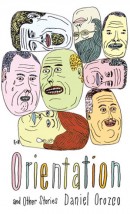 In my first review for the New York Times, I look at Daniel Orozco’s short story collection Orientation, which gathers stories that have appeared in literary journals over the years. Highly polished, they examine the lives of office dwellers who face banal indignities on the clock and pointed crises off it. . . . The week’s most entertaining review comes from Daniel Akst, who looks at the current state of small-town newspapers (print and digital) as shown in a book written by Judy Muller. There’s more than one anecdote worth reading aloud to the person sitting next to you, so go read it. . . . Etelka Lehoczky praises Alice LaPlante’s Turn of Mind, a thriller told from the perspective of a woman with Alzheimer’s disease: “From agonizing, slow-motion-car-crash moments to the ironic frissons of a good horror movie, [LaPlante] hits every bell.” . . . Adam Goodheart reviews David S. Reynolds’ new book about Uncle Tom’s Cabin, “a kind of biography of the novel itself, tracing an arc that spans two whole centuries, from [Harriet Beecher] Stowe’s birth in 1811 to the present. In a sense, it is also a history of American culture from the era of Transcendentalism to that of television miniseries.” . . . Richard J. Evans, the author of an acclaimed trilogy about Nazi Germany, reviews a new book about William Shirer, the author of The Rise and Fall of the Third Reich. He praises the account of Shirer’s work, saying it “has much of interest to say about the life of a foreign correspondent in the war-torn Europe of the 1930s and early 1940s,” but says the book is also riddled with historical errors.
In my first review for the New York Times, I look at Daniel Orozco’s short story collection Orientation, which gathers stories that have appeared in literary journals over the years. Highly polished, they examine the lives of office dwellers who face banal indignities on the clock and pointed crises off it. . . . The week’s most entertaining review comes from Daniel Akst, who looks at the current state of small-town newspapers (print and digital) as shown in a book written by Judy Muller. There’s more than one anecdote worth reading aloud to the person sitting next to you, so go read it. . . . Etelka Lehoczky praises Alice LaPlante’s Turn of Mind, a thriller told from the perspective of a woman with Alzheimer’s disease: “From agonizing, slow-motion-car-crash moments to the ironic frissons of a good horror movie, [LaPlante] hits every bell.” . . . Adam Goodheart reviews David S. Reynolds’ new book about Uncle Tom’s Cabin, “a kind of biography of the novel itself, tracing an arc that spans two whole centuries, from [Harriet Beecher] Stowe’s birth in 1811 to the present. In a sense, it is also a history of American culture from the era of Transcendentalism to that of television miniseries.” . . . Richard J. Evans, the author of an acclaimed trilogy about Nazi Germany, reviews a new book about William Shirer, the author of The Rise and Fall of the Third Reich. He praises the account of Shirer’s work, saying it “has much of interest to say about the life of a foreign correspondent in the war-torn Europe of the 1930s and early 1940s,” but says the book is also riddled with historical errors.
Wednesday, July 20th, 2011
 David Gee shares a few rejected book cover designs, without their titles or any other text. . . . Rick Poynor writes about how much originality is even possible in book design, and lands on a line that could apply to so many things: “The notion of continual reinvention as a worthwhile or attainable goal is particularly misplaced here…” . . . The Millions shares the opening lines of Haruki Murakami’s 1Q84, his new 928-page novel due in October. . . . John Self writes about authors with a gap between their best work and their best-known work (he prefers Joseph Heller’s Something Happened to Catch-22, etc.), and kicks off a spirited string of comments with further suggestions. . . . A list of 10 unconventional bookstores, most of which I feel the need to visit immediately. . . . The inspiring story of one man’s quest to publish a book with the permission of both Nick Hornby and Bruce Springsteen. (via Pete Lit) . . . An editor’s exchange with Stuart Dybek about what to name a Chicago housing project in one of Dybek’s stories. . . . Nicole Rudick talks to Paul Hornschemeier about his new graphic novel, Life with Mr. Dangerous. (“My mother reared me to be an eighty-year-old, gay man from England, so I think I had some identity issues.”) . . . Elizabeth Gumport, who has written some good book reviews herself, argues that perhaps book reviews shouldn’t exist.
David Gee shares a few rejected book cover designs, without their titles or any other text. . . . Rick Poynor writes about how much originality is even possible in book design, and lands on a line that could apply to so many things: “The notion of continual reinvention as a worthwhile or attainable goal is particularly misplaced here…” . . . The Millions shares the opening lines of Haruki Murakami’s 1Q84, his new 928-page novel due in October. . . . John Self writes about authors with a gap between their best work and their best-known work (he prefers Joseph Heller’s Something Happened to Catch-22, etc.), and kicks off a spirited string of comments with further suggestions. . . . A list of 10 unconventional bookstores, most of which I feel the need to visit immediately. . . . The inspiring story of one man’s quest to publish a book with the permission of both Nick Hornby and Bruce Springsteen. (via Pete Lit) . . . An editor’s exchange with Stuart Dybek about what to name a Chicago housing project in one of Dybek’s stories. . . . Nicole Rudick talks to Paul Hornschemeier about his new graphic novel, Life with Mr. Dangerous. (“My mother reared me to be an eighty-year-old, gay man from England, so I think I had some identity issues.”) . . . Elizabeth Gumport, who has written some good book reviews herself, argues that perhaps book reviews shouldn’t exist.
Tuesday, July 19th, 2011
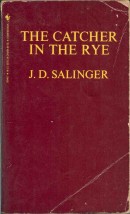 Last weekend marked the 60th anniversary of the publication of The Catcher in the Rye, and to commemorate the event, the Fiction Advocate published “The Real Holden Caulfield,” an extended essay by Michael Moats. The whole thing is available for $1.99 at the Fiction Advocate, and the Awl and the Rumpus have both published portions of it. From reading the excerpts, the project seems smart, lively, and personal. Here are the first three paragraphs:
Last weekend marked the 60th anniversary of the publication of The Catcher in the Rye, and to commemorate the event, the Fiction Advocate published “The Real Holden Caulfield,” an extended essay by Michael Moats. The whole thing is available for $1.99 at the Fiction Advocate, and the Awl and the Rumpus have both published portions of it. From reading the excerpts, the project seems smart, lively, and personal. Here are the first three paragraphs:
It’s the story of a young boy wandering the streets of his home city. He can’t go to school and he can’t go home. In the course of a few days, he runs across a series of unsavory characters, people who seem honest but are not. He feels pursued at every turn by an overactive conscience. The boy gets wet, catches a chill; he drinks and swears and makes an ass of himself. He can’t seem to connect with anyone he can trust. He meets a girl, who is finally able to give him the thing he is searching for, something that makes him — or at least makes him feel, in a world so phony — like a real boy.
This is, roughly, the story of Pinocchio.
There is no known evidence that Salinger drew from the old Tuscan story when creating Holden Caulfield. It’s only coincidence that the cover of Il Giovane Holden, the Italian translation of The Catcher in the Rye, shows a rough sketch of Holden with arms and legs skewed, his body crumpled like a discarded marionette. Holden, who might have just as easily cried, “Oh, I’m sick and tired of always being a puppet!”
Friday, July 15th, 2011
In August, Nicholson Baker’s House of Holes arrives. Set at a sex-themed resort, New York Magazine has already said it “may be the raunchiest novel ever published by a major American house.” For now (via Maud Newton’s Twitter page), here’s a list of words that appeared on the book’s 14-page style guide. Actually, the full sample is here. These are just some of the more family-friendly examples (I think).
arrives. Set at a sex-themed resort, New York Magazine has already said it “may be the raunchiest novel ever published by a major American house.” For now (via Maud Newton’s Twitter page), here’s a list of words that appeared on the book’s 14-page style guide. Actually, the full sample is here. These are just some of the more family-friendly examples (I think).
bonky
boobosity
boycone
eggmate
floof
flump
hip-jouncing
murfle; murflement
shudderation
spicetime
Friday, July 15th, 2011
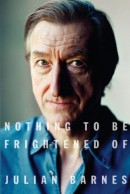 From Nothing to Be Frightened Of
From Nothing to Be Frightened Of by Julian Barnes:
by Julian Barnes:
The first time I went to church with my family — for a cousin’s wedding — I watched in amazement as Dad dropped to his knees in the pew, then covered his forehead and eyes with one hand. Where did that come from, I asked myself, before making some half-heartedly imitative gesture of piety, attended by furtive squinting through the fingers. It was one of those moments when your parents surprise you — not because you’ve learnt something new about them, but because you’ve discovered a further area of ignorance. Was my father merely being polite? Did he think that if he simply plonked himself down he would be taken for a Shelleyan atheist? I have no idea.
Friday, July 15th, 2011
A most-often weekly roundup of noteworthy reviews from other sources.
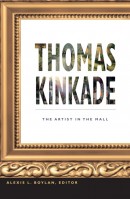 Any review titled “Bullshit Heaven” has to have something going for it. Jed Perl has a lot of smart fun shaking his head at a new collection of essays by academics about Thomas Kinkade, Painter of Light: “The entire subject of Thomas Kinkade is a nervous breakdown waiting to happen. I am not always sure whether the authors gathered together in [this] collection are being grimly sincere or shamelessly ironic. I wonder if they themselves are in some doubt about this.” . . . Peter D. Kramer reviews Adventures in the Orgasmatron (got your attention?), about the “fascinating, unfairly overlooked” Wilhelm Reich, who wrote “a book that forever changed the way psychotherapy is done,” and went on to “crazily, confusingly … elaborate a dream of a society saved by sex.” . . . Kenneth Sherman praises the recently republished One Foot in America, a 1950 novel by Yuri Suhl that Sherman says “covers much of the same territory as [Henry] Roth’s masterpiece, but whereas Call It Sleep is dark and brooding, Suhl’s book is a fast-paced, entertaining picaresque.” The book “tells the story of Sol (Shloime) Kenner, a good-natured and strong-willed immigrant who relishes his passage from ‘greenhorn’ to fully fledged American in the mid-1920s.” . . . Only available online to New Yorker subscribers, Joanna Kavenna’s consideration of John Banville and his mystery-writing alter ego Benjamin Black is well worth your time. . . . Henry D. Fetter reviews a book about baseball’s struggles to float during the Depression, “in which Ronald Coase and his eponymous economics theorem share the page with Hank Greenberg and Joe DiMaggio, and balance sheets outweigh box scores as basic source material.”
Any review titled “Bullshit Heaven” has to have something going for it. Jed Perl has a lot of smart fun shaking his head at a new collection of essays by academics about Thomas Kinkade, Painter of Light: “The entire subject of Thomas Kinkade is a nervous breakdown waiting to happen. I am not always sure whether the authors gathered together in [this] collection are being grimly sincere or shamelessly ironic. I wonder if they themselves are in some doubt about this.” . . . Peter D. Kramer reviews Adventures in the Orgasmatron (got your attention?), about the “fascinating, unfairly overlooked” Wilhelm Reich, who wrote “a book that forever changed the way psychotherapy is done,” and went on to “crazily, confusingly … elaborate a dream of a society saved by sex.” . . . Kenneth Sherman praises the recently republished One Foot in America, a 1950 novel by Yuri Suhl that Sherman says “covers much of the same territory as [Henry] Roth’s masterpiece, but whereas Call It Sleep is dark and brooding, Suhl’s book is a fast-paced, entertaining picaresque.” The book “tells the story of Sol (Shloime) Kenner, a good-natured and strong-willed immigrant who relishes his passage from ‘greenhorn’ to fully fledged American in the mid-1920s.” . . . Only available online to New Yorker subscribers, Joanna Kavenna’s consideration of John Banville and his mystery-writing alter ego Benjamin Black is well worth your time. . . . Henry D. Fetter reviews a book about baseball’s struggles to float during the Depression, “in which Ronald Coase and his eponymous economics theorem share the page with Hank Greenberg and Joe DiMaggio, and balance sheets outweigh box scores as basic source material.”
Wednesday, July 13th, 2011
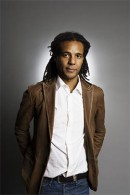 The July issue of Harper’s features an excerpt from Zone One
The July issue of Harper’s features an excerpt from Zone One , Colson Whitehead’s soon-to-be-published entry in the thriving post-apocalyptic genre. The magazine also asked Whitehead six questions on its website. Here’s one of them, particularly appropriate as a lead-in to something else that will appear here sometime in the next week or so:
, Colson Whitehead’s soon-to-be-published entry in the thriving post-apocalyptic genre. The magazine also asked Whitehead six questions on its website. Here’s one of them, particularly appropriate as a lead-in to something else that will appear here sometime in the next week or so:
On your website, you’ve posted a list of apocalypse-themed films that affected you as a kid. Does one in particular stand out as influencing the book?
When I was a youngster, comic books and novels such as Lucifer’s Hammer and The Stand provided models of the apocalypse, but movies were my true primer — the glorious feel-bad dystopian flicks of the 1960s and 1970s. The inexplicable monsters of Night of the Living Dead and Dawn of the Dead were my template for this book, as they are for everything we currently categorize as a zombie text. (Happy to discuss aspects of the novel I Am Legend with advanced students!) I was in fifth or sixth grade when the local New York PBS affiliate broadcast the original Romero movie for Halloween, and as someone who rarely encountered the Strong Black Protagonist in movies — outside of blaxploitation flicks — the movie was a revelation. Night of the Living Dead is the story of a black man on the run from the mob of white people who want to destroy him, literally devour him — in other words, it’s a crucial subplot of the America narrative.
Monday, July 11th, 2011
Just a friendly reminder that you can join me and author Carmela Ciuraru tonight at Greenlight Bookstore in Brooklyn for a discussion of Carmela’s book Nom de Plume and literary pseudonyms throughout history. Perhaps you will learn which author almost used the pseudonym Michael Angelo Titmarsh. Or which author had so many pseudonyms that they began critiquing the work of the others. You could probably learn the answers to that and more from Google, but will Google give you free wine, offer prizes and surround you with a lovely neighborhood bookstore? No, it will not. (I’m sure Google is working feverishly on wine-with-searching, but for now: No, it will not.) Hope to see you there.
and literary pseudonyms throughout history. Perhaps you will learn which author almost used the pseudonym Michael Angelo Titmarsh. Or which author had so many pseudonyms that they began critiquing the work of the others. You could probably learn the answers to that and more from Google, but will Google give you free wine, offer prizes and surround you with a lovely neighborhood bookstore? No, it will not. (I’m sure Google is working feverishly on wine-with-searching, but for now: No, it will not.) Hope to see you there.
Wednesday, July 6th, 2011
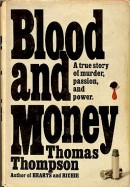 After completing a brief stretch of true-crime reading last year, I tried to find lists of other recommendations. A lot of books in the genre get suggested over and over again. But Peter Manso has a list of 10, a few of which were unfamiliar to me and sound intriguing, including Blood and Money by Thomas Thompson. (“Now nearly forty years old, this account of a Houston society marriage gone bad remains compellingly readable, a Thackeray-like novel-of-manners set among oil money and the new rich.”) But perhaps most Backlist-friendly is one writer I’ve never heard of, whose Amazon page is littered with “No Image Available”:
After completing a brief stretch of true-crime reading last year, I tried to find lists of other recommendations. A lot of books in the genre get suggested over and over again. But Peter Manso has a list of 10, a few of which were unfamiliar to me and sound intriguing, including Blood and Money by Thomas Thompson. (“Now nearly forty years old, this account of a Houston society marriage gone bad remains compellingly readable, a Thackeray-like novel-of-manners set among oil money and the new rich.”) But perhaps most Backlist-friendly is one writer I’ve never heard of, whose Amazon page is littered with “No Image Available”:
Rather than pick an individual title, I broadly nominate the books of the late Hank Messick, ex-Louisville Courier-Journal reporter who helped to set the standard for unflinching investigative reporting on crooks, gamblers, thieves, and mobsters. Of Messick’s 19 books, I’d recommend The Silent Syndicate (1967) that traced the rise of the so-called Purple Gang in Cleveland during Prohibition; Razzle-Dazzle (1995), his probe of Newport, Ky., gambling, and his bio, Lansky (1971), that depicted the eponymous mobster as a financial genius.
Tuesday, July 5th, 2011
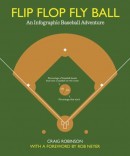 Today is a good day for baseball geeks like me, as it marks the publication of Craig Robinson’s Flip Flop Fly Ball
Today is a good day for baseball geeks like me, as it marks the publication of Craig Robinson’s Flip Flop Fly Ball , an oversize, lavishly illustrated book based on Robinson’s blog of infographics. The combination of his precisely created charts and the offbeat things they chart reflects a brain firmly, winningly divided between the game’s childlike, imaginative pull and the over-thought technocracy of its sabermetrics era.
, an oversize, lavishly illustrated book based on Robinson’s blog of infographics. The combination of his precisely created charts and the offbeat things they chart reflects a brain firmly, winningly divided between the game’s childlike, imaginative pull and the over-thought technocracy of its sabermetrics era.
An excerpt from the book’s introduction in which Robinson recites some of the questions that fuel his work gives a good sense of just how bizarre, playful, and addictive the book is:
“What distance is covered by base runners in a season? How big is the Green Monster compared to the Statue of Liberty? Which player has played for the most organizations? How many teams have their home dugout on the first-base side? How many Native Americans live in Cleveland? . . . Who was the last player called Wright to play in right field? (It was George Wright for the Expos in 1986. And, incidentally, no player called Short has ever played shortstop.) Which team’s players travel the greatest distance from rookie ball to single-A, double-A, triple-A, and then the majors? Has any player ever played in all the towns Steve Miller mentions in “Rock’n Me”? What was number one on the Billboard Hot 100 when Nolan Ryan made his debut and when he played his last game?* Which town in the contiguous United States is the farthest from a major league team?
Many of the charts and graphs in the book are new, but a few are available for viewing on the blog, like how far off Earth’s surface A-Rod’s annual salary would reach if it were a stack of pennies. This is hardly the strangest thought that has passed through Robinson’s brain. How about breaking down bobblehead giveaways? Or compiling the directional orientation of batters at each big-league stadium? But along with these more comic offerings are more straightforward historical interests, like a time line of all the teams that have played in the American or National leagues, or a map showing all the times a team has relocated.
The oddest thing about Robinson might be that he is an Englishman who didn’t really discover baseball until his mid-thirties. But when you read a few of the essays sprinkled throughout the book — about how he came to the sport and fell in love with “the evil team,” the Yankees; about a road trip to stadiums around the country; about his irrational affection for the Colorado Rockies — it’s hard to imagine he didn’t grow up somewhere in America, kicking around a Little League field and dreaming of distant minor league ballparks.
*”You Can’t Hurry Love” by the Supremes and “Dreamlover” by Mariah Carey, respectively.

 In my first review for the New York Times,
In my first review for the New York Times,  David Gee shares
David Gee shares  Last weekend marked the 60th anniversary of the publication of The Catcher in the Rye, and to commemorate the event, the Fiction Advocate published “The Real Holden Caulfield,” an extended essay by Michael Moats. The whole thing is available for $1.99
Last weekend marked the 60th anniversary of the publication of The Catcher in the Rye, and to commemorate the event, the Fiction Advocate published “The Real Holden Caulfield,” an extended essay by Michael Moats. The whole thing is available for $1.99  From
From  Any review titled “Bullshit Heaven” has to have something going for it. Jed Perl has
Any review titled “Bullshit Heaven” has to have something going for it. Jed Perl has  The July issue of Harper’s features an excerpt from
The July issue of Harper’s features an excerpt from  After completing a brief stretch of true-crime reading last year, I tried to find lists of other recommendations. A lot of books in the genre get suggested over and over again. But Peter Manso
After completing a brief stretch of true-crime reading last year, I tried to find lists of other recommendations. A lot of books in the genre get suggested over and over again. But Peter Manso  Today is a good day for baseball geeks like me, as it marks the publication of Craig Robinson’s
Today is a good day for baseball geeks like me, as it marks the publication of Craig Robinson’s 